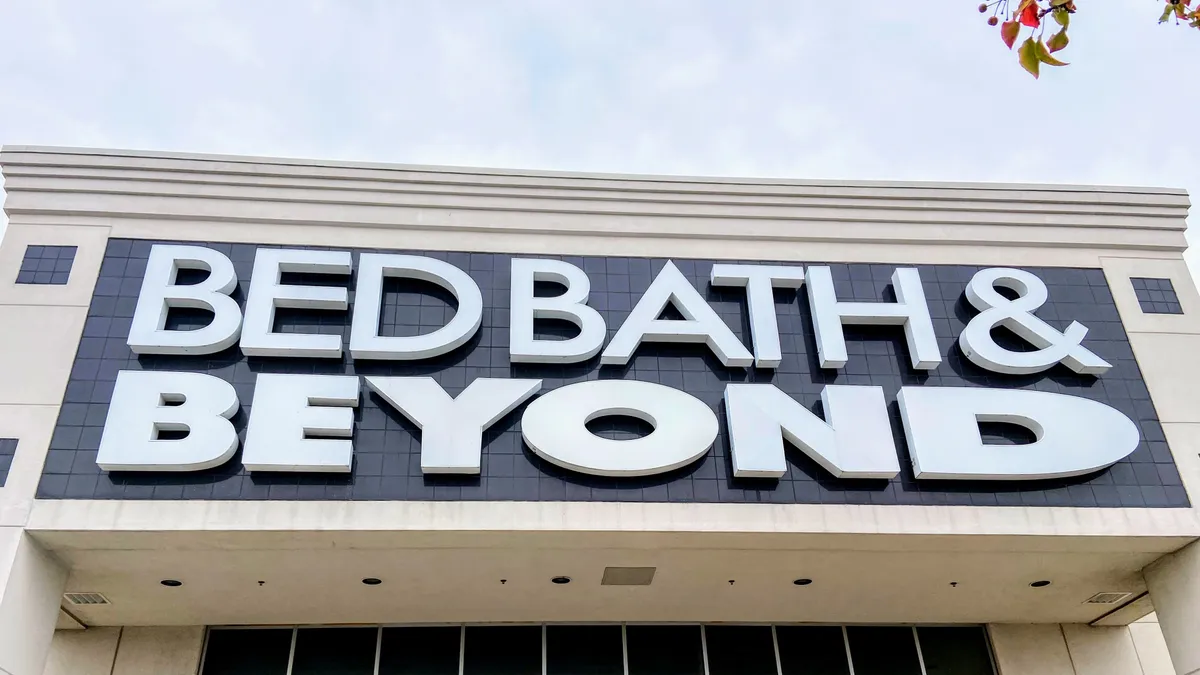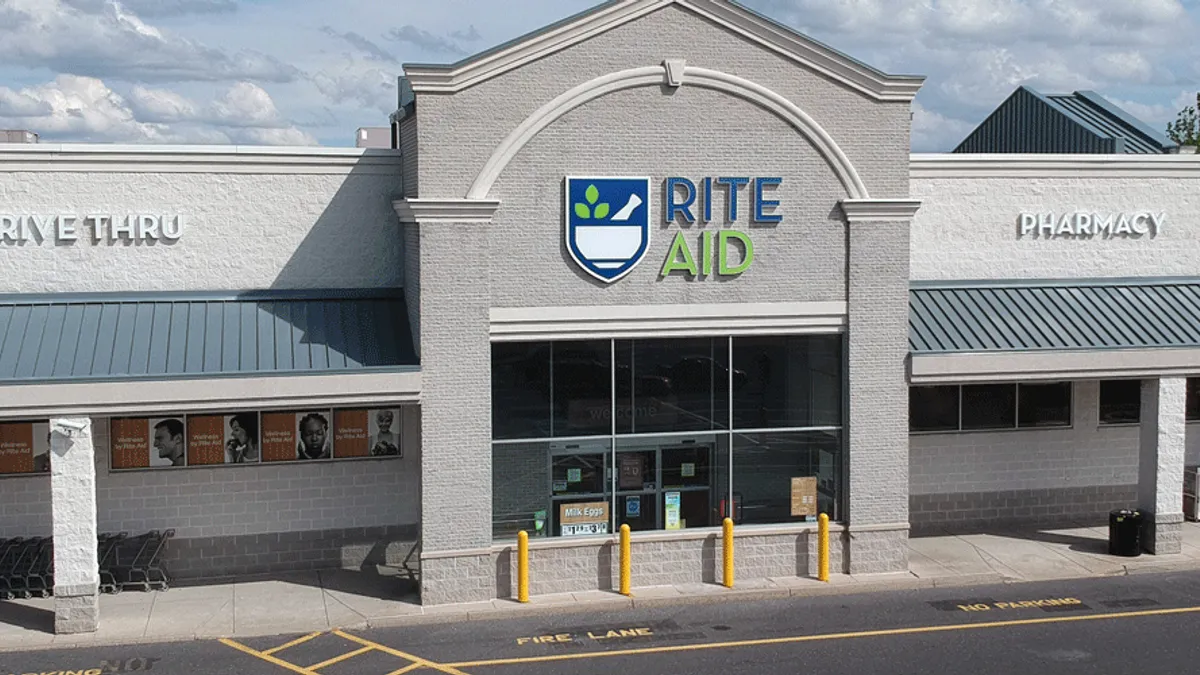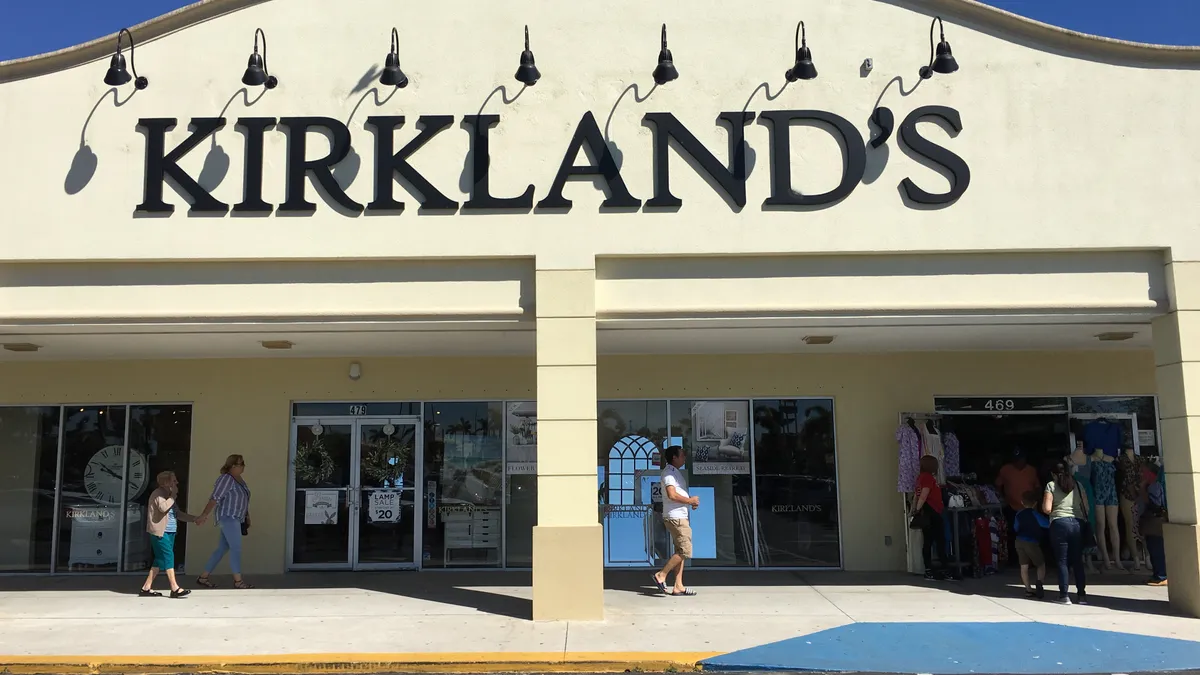Months after buying Bed Bath & Beyond’s brand out of bankruptcy and weeks after announcing the relaunch of Overstock.com, e-commerce retailer Beyond remains in flux. Overstock brought the brands together this summer with the $21.5 million purchase of Bed Bath & Beyond’s brand assets at a bankruptcy auction.
The company made several big moves in quick succession — relaunching Bed Bath & Beyond’s e-commerce site, announcing plans to relaunch Overstock, and renaming itself Beyond. Then, most recently, Overstock CEO Jonathan Johnson, who oversaw the acquisition of Bed Bath & Beyond and led the e-retailer since 2019, left the company on Nov. 6. John Thaler, founder of investment firm JAT Capital, had recently called for Johnson’s removal, citing poor financial performance.
“JAT Capital does not call for changes at our portfolio companies often, and it is only after careful consideration and in circumstances that are particularly unusual,” Thaler wrote in a letter to the board. “This is one such case.” JAT Capital owns a nearly 10% stake in Beyond.
Thaler laid out a handful of concerns. They included the claim that management had lost the confidence of investors, shareholders and vendors, and that the rebranding as Bed Bath & Beyond was a “bet the company” moment that risked burning half of the company’s existing cash.
“[Johnson] has performed poorly (as demonstrated by the company’s financials relative to its peer group), he has communicated poorly with investors and the sell-side community, and he has recently taken actions that give the appearance that his own interests are being prioritized,” Thaler said.
Johnson’s exit comes just weeks before the critical holiday shopping season.
“The timing of CEO Jonathan Johnson’s departure seems abrupt,” Cristina Fernández, managing director and senior research analyst with Telsey Advisory Group, told Retail Dive in an email. “Although it makes sense that Overstock/Beyond Inc. would need a new leader to take the company to the next level, it seems too early for him to depart just a few months after the acquisition. Typically, we see leaders stay through the first year of an integration.”
How Bed Bath & Beyond got here
Just a few years ago, Bed Bath & Beyond had around 1,500 physical locations. It also owned a portfolio of other retail businesses, including BuyBuy Baby. But by this February, the company was in trouble. It sought $1 billion to sustain operations and pay debts. The turnaround efforts failed and Bed Bath & Beyond filed for Chapter 11 bankruptcy on April 23.
Then Overstock stepped in, with an aim of combining the two brands’ strengths. At the time, Johnson said Bed Bath & Beyond retained significant consumer cachet despite the bankruptcy. Under his leadership, Overstock moved to relaunch and rebrand itself to Bed Bath & Beyond.
Despite those efforts, the combined company delivered soft financial performance in its first couple of quarters post-acquisition. Beyond’s year-over-year Q2 revenue fell 20% to $422 million.
It fell 19% to $373 million in the third quarter. The company in Q3 also reported an operating loss of $41 million, a net loss of $63 million and a gross profit of $70 million, which represents nearly 19% of total revenue.
“Expectations about how quickly Overstock could benefit from the acquisition were perhaps too optimistic, given the lower demand for home furnishings currently and the struggles with the Bed Bath & Beyond brand that led to the company’s bankruptcy,” Fernández said. “The 3Q23 results accelerated pressure for a change at the top from activist investors.”
In an interview with Retail Dive conducted before he stepped down, Johnson acknowledged that both companies had issues.
Johnson said previously that Bed Bath & Beyond had an outdated business model. And under former CEO Mark Tritton, it tried a shift to a private label strategy that failed to resonate with customers. But Overstock also faced financial pressures.
“Frankly, we were facing a going concern opinion from our auditors,” Johnson recalled of when he first joined the company.
Additionally, in recent years, Overstock’s offering had evolved and no longer matched its name, which confused customers and vendors.
Beyond, in an announcement, characterized Johnson’s exit as a “mutual agreement.” But a Nov. 5 filing with the U.S. Securities and Exchange Commission indicates that Johnson left “at the request of the board.” Johnson will receive a severance that includes a lump sum payment of about $1.3 million 60 days after separating from the company, documents show.
In Johnson’s place, the company said President David Nielsen would take on additional responsibilities as interim CEO. Chief Financial Officer Adrianne Lee also took on expanded responsibilities by overseeing legal and human resources functions. As a result of Johnson’s departure, the board will shrink to eight members.
JAT Capital’s Thaler already has someone in mind to manage the company, though – Marcus Lemonis, who joined Beyond’s board in October. Lemonis is the current CEO of RV and outdoor gear retailer Camping World. Lemonis has indicated his interest in operating Beyond, Thaler said.
Clues in how Lemonis likes to do business can be taken from his eight seasons starring in “The Profit” on CNBC. In the reality show, Lemonis offered a financial investment of his own money in struggling small businesses in exchange for an ownership stake. Lemonis has taken the same tact at Beyond, “having already bought a significant amount of stock personally,” Thaler said in his letter.
‘It can be profitable’
On the same day Johnson left, after 20 years with Overstock, the company officially changed its corporate name to Beyond. It also left the Nasdaq and joined the New York Stock Exchange under the ticker BYON. But it’s keeping the Bed Bath & Beyond name for its consumer-facing e-commerce business.
Before stepping down, Johnson said he didn’t want to recreate the company’s large footprint of physical stores. But he did say opening Bed Bath & Beyond pop-up shops around back-to-school and back-to-college season was a possibility. He also reiterated the company would use its app to drive promotions, versus the big blue 20% off paper coupons Bed Bath & Beyond used in the past.
According to Fernández, it appears “Overstock’s strategy is to offer more coupons initially, while over time weaning back and making the consumer accustomed to its everyday low-price model.” The double rebranding and company revamp, Fernández said, “provides Overstock an opportunity to gain new customers.”
Michael Pachter, managing director of equity research for Wedbush Securities, echoed that sentiment. “Bed Bath & Beyond had way too many physical stores, had debt to service, and owned its inventory in a declining demand environment,” Pachter said in an email. “Overstock has no debt, only one fulfillment center, and very low fixed costs, so it can be profitable at a very low level of sales.”
Fernández said bringing both brands under one roof was a smart move. One of Johnson’s last announcements as CEO was that Beyond plans to relaunch Overstock as an off-price and closeout-focused e-retailer by the end of next year.
“A key reason for Overstock purchasing the Bed Bath & Beyond name is that many consumers and vendors incorrectly viewed Overstock as a liquidation site whereas Bed Bath & Beyond had a strong association with everyday home sales,” Fernández said. “As such, many vendors did not want to sell to Overstock.”
“In addition,” Fernández continued, “Overstock was known primarily for furniture, while Bed Bath & Beyond was known for bedding, bath and kitchen products. The name change has allowed Overstock to attract new vendors and expand into new categories, and it now has a more complete assortment to offer to consumers.”
But now, with Johnson gone and the company under interim leadership, it’s unclear if any of his visions for the company will come to fruition under whoever is selected as the new CEO.
Looking ahead, Fernández said Beyond has an opportunity on the table with the holidays.
“The holiday season is an important time of the year for retail and before the recent struggles, Bed Bath & Beyond did a solid business in holiday decor and cooking/entertaining. Overstock’s goal should be to gain share in these categories and stay in front of the consumer during a competitive period,” Fernández said.





















